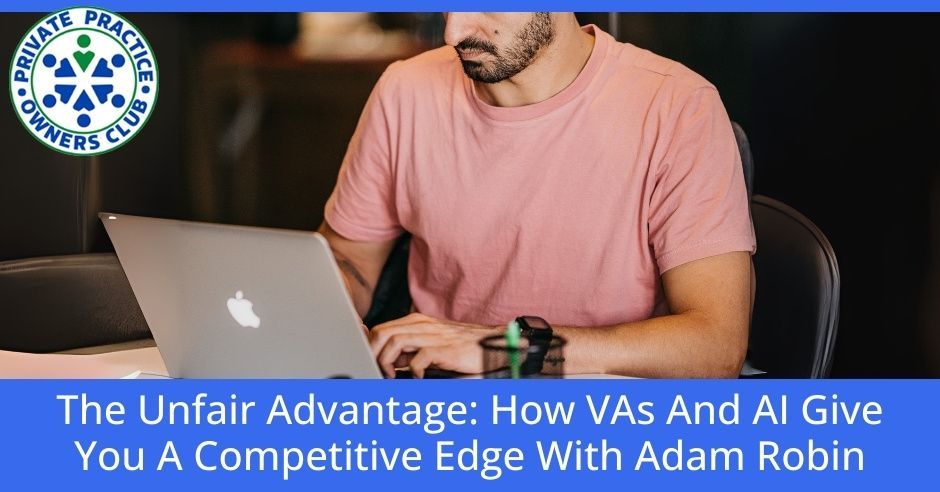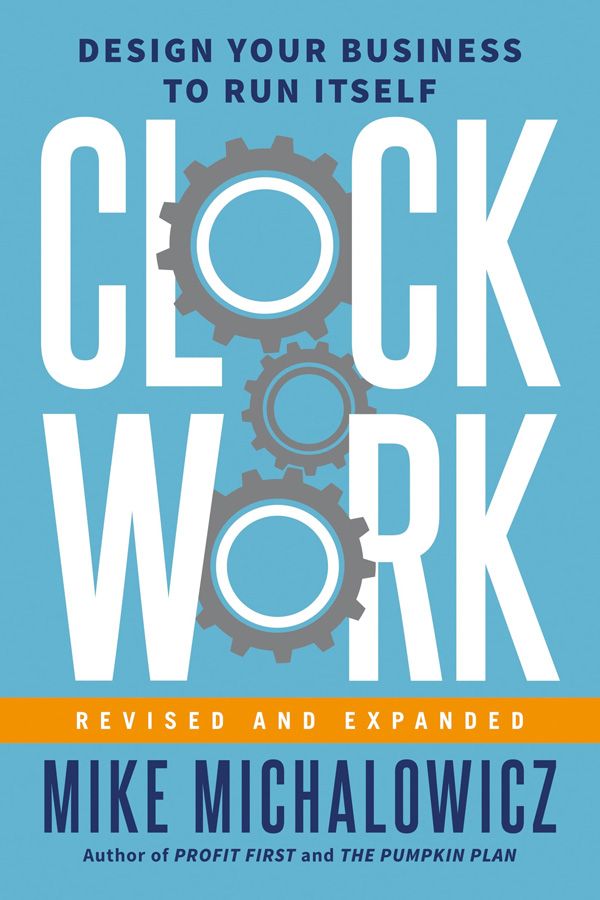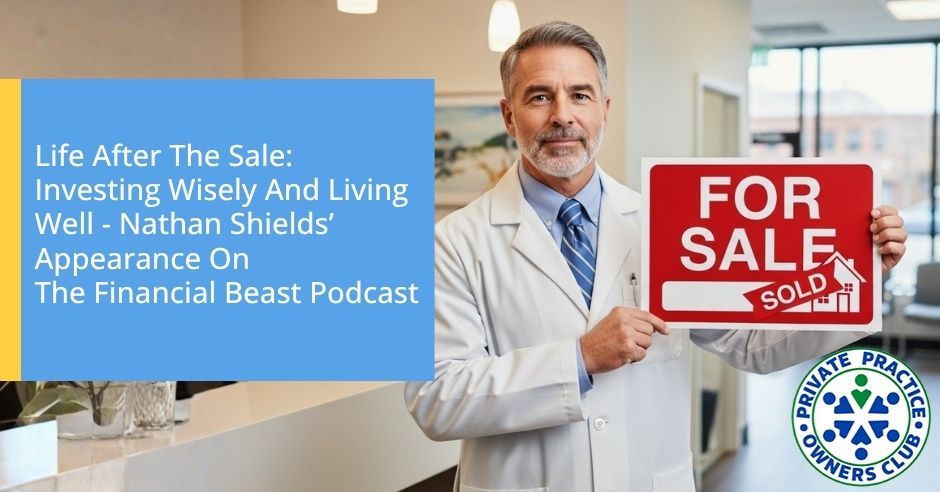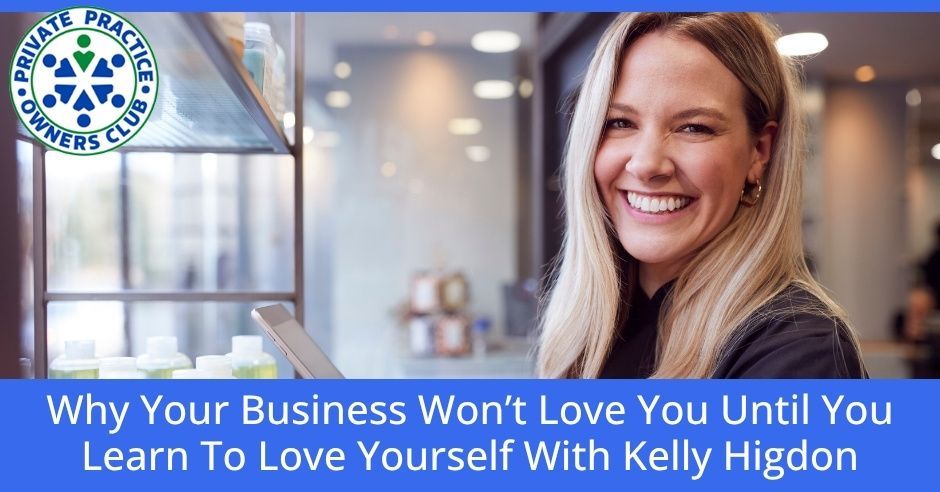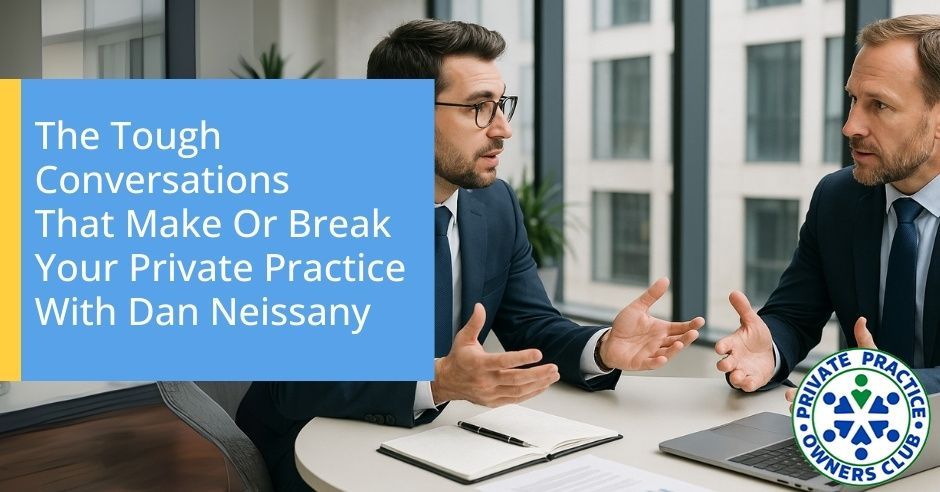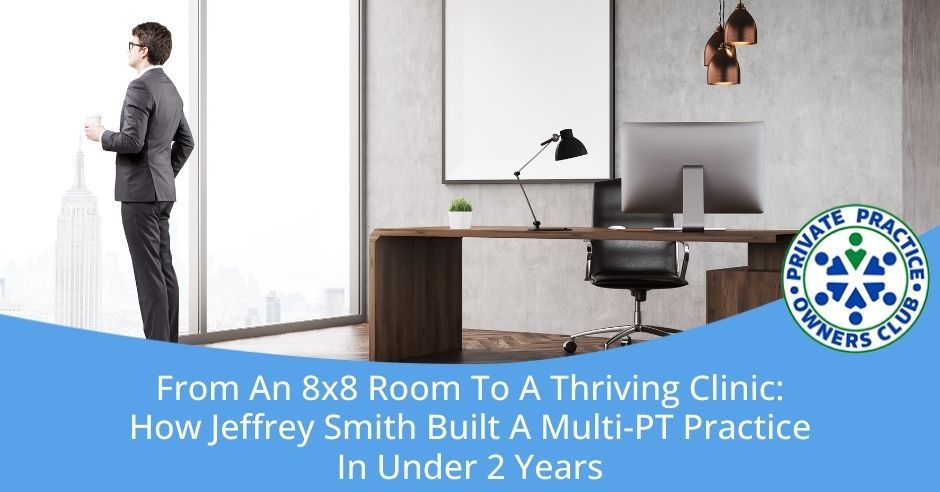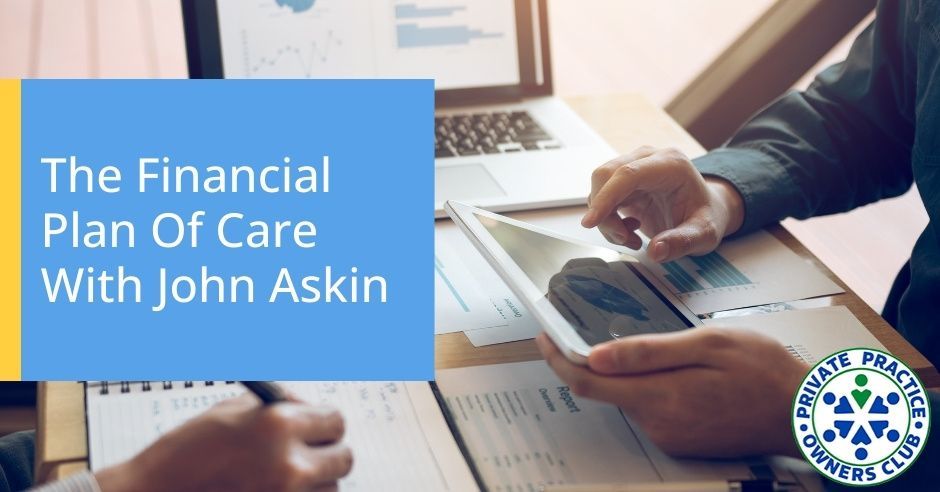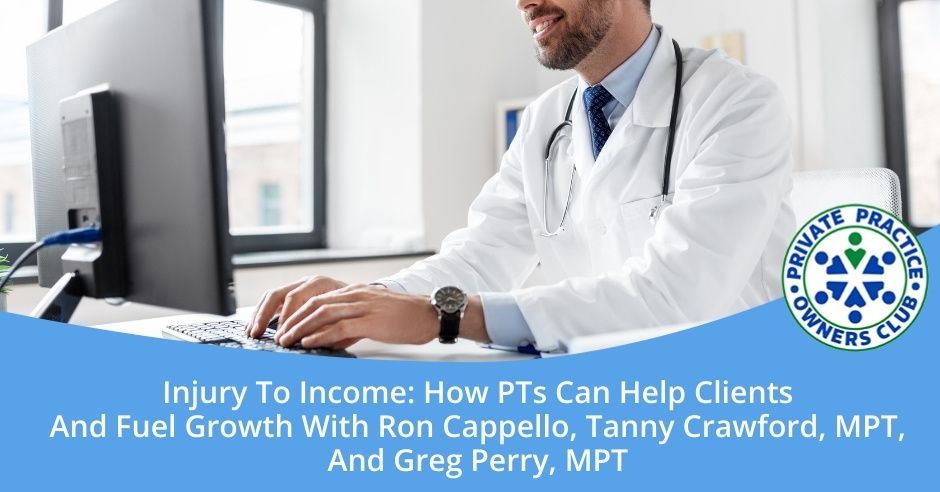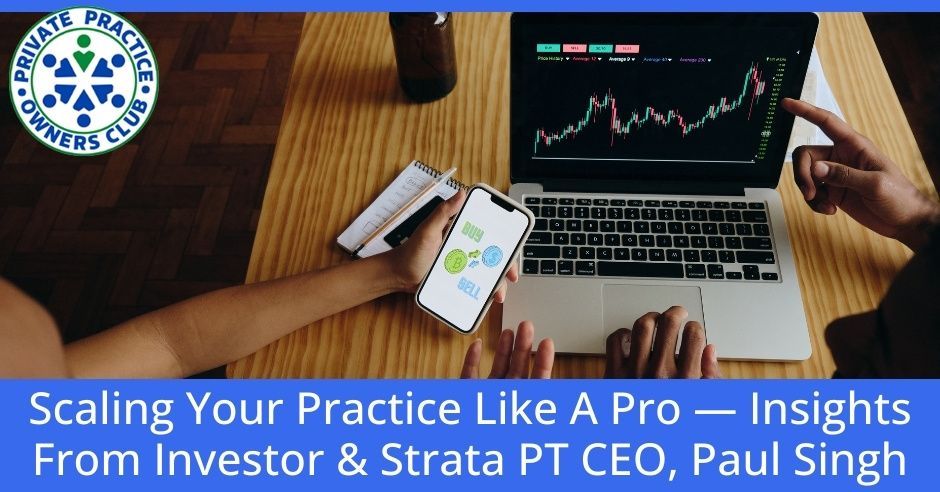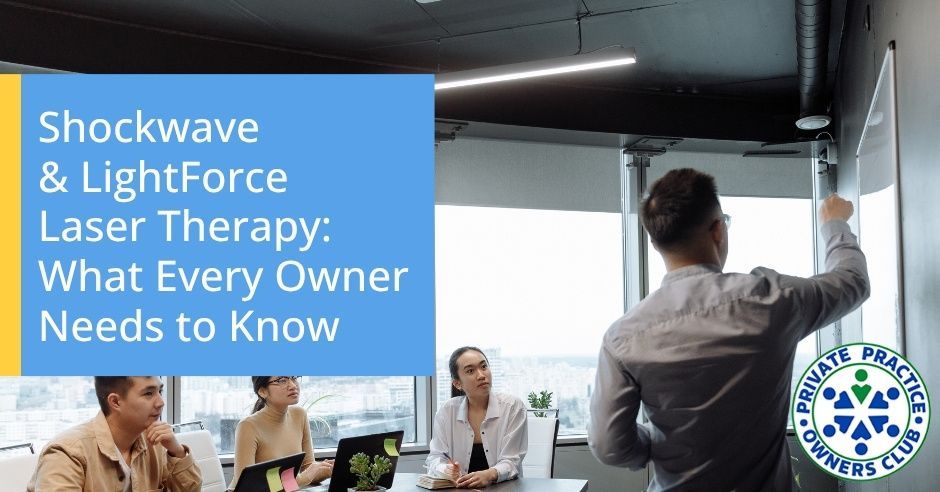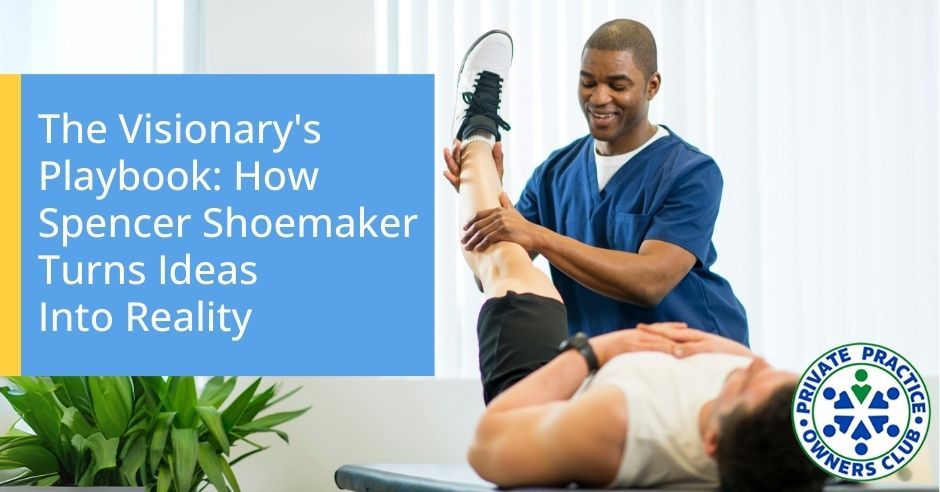Are you still doing it all in your private practice? The administrative tasks, the scheduling, the follow-ups – it's a one-way ticket to burnout. In this episode, Adam Robin of
Inbox Zero, a company that specializes in connecting healthcare practices with top-tier VAs, talks with Nathan Shields about these two modern yet under-utilized resources. We dive into how leveraging virtual assistants and cutting-edge AI isn't just a luxury but an essential strategy for modern practice owners.
Adam and I reveal the two-pronged approach that can completely transform your workflow: delegating routine tasks to a VA and using AI to automate the rest. We break down exactly how this powerful combination frees up your time, slashes overhead, and allows you to focus on what matters most: your patients and the growth of your business. If you're ready to move from working in your practice to working on it, this episode is your roadmap.
For more info on how Nathan and Adam can transform your business, go to
www.ppoclub.com and book a call with us.
---
Listen to the Podcast here
The Unfair Advantage: How VAs And AI Give You A Competitive Edge With Adam Robin
Welcome to the Private Practice Owners club. I'm Nathan Shields. I got my partner, Adam Robin, with me. How are you doing, man?
Locked in, ready to roll. I'm good. How are you doing?
I'm doing good. We are two months away from the conference. A little anxious, still nervous, and excited. Mix of emotions.
Two months?
Did I say two months? Two weeks?
Two weeks. I was like, “Wait a minute.”
In two weeks, we've got to be ready to go, but I'm excited about it. It's going to be significantly better than last year, and we've some amazing speakers and amazing content, and it's going to be fun.
I did some role playing through some of the things I'm going to be talking about, just to talk through my lines, my talking points. It was really cool to feel how I got so energized, as I was doing it. It felt like I was getting pumped up about it. It's really fun. Just getting excited about the whole thing.
I need to do some of that because right now I'm stuck in editing my PowerPoint so they look just right, and hit the key points, and that stuff. The editing and whatnot are draining. I’m just staring at the computer for hours.
Which brings me to a point. You should have a virtual assistant doing that for you. Whenever I say I'm role-playing, what I mean is I press record and I talk about the things that I believe in, and then I send her the video and she makes the whole PowerPoint. She does it all.
What?
I just talk about what I already know.
That’s cool.
Come on, man. You've got to get on the deal.
AI Tools Nathan And Adam Are Using
I do need to get on board. I know you do that a lot with your AI. Are you using ChatGPT right now? What are you using?
I use ChatGPT. I figured out how to build out some custom GPTs. It's not hard to do. It's pretty simple, but I use that, and also, I leverage Loom to transcribe my voice, and then I train the GPTs on my transcriptions, and it starts to sound like me, write like me. Through using it, you start getting the outputs that you're looking for.
I've been doing a lot of Gemini simply because it's tied to my Google stuff, and it's on my home screen on my phone. I can use Gemini a lot. I like Gemini a lot. I use Gemini, ChatGPT, and Claude because I'm writing a book. Claude is good for more of that content, per se. It's got a better voice when it comes to writing out that stuff.
If I'm doing something for a social media post, if I'm making checklists, I spoke into Gemini, and I said, “Here are all these findings that I'm doing as I'm auditing this clinic. I don't want to write my notes. Here are my notes for what I'm seeing amongst this information. Give me your version of the audit to see if it would be any different than what I was coming up with in my audit,” which is cool.
That was really cool because it gave me all the PowerPoints. It gave me a structure. Now I can save that digitally instead of having this handwritten piece of paper with all the notes on it, scratches and scribbles, and trying to decipher. You're taking it to another level than I am, and it sounds like you're even having conversations with it, going back and forth?
With AI?
Yeah. My wife and I started doing that a little bit with ChatGPT, which was interesting, but I find that their responses are a little bit verbose. It gets really wordy, and I have to, like, cut them off and say, “No.” Do you have conversations with it?
I do. For me, it’s usually if I'm seeking out information, if I'm trying to get clear on something, then I use it to get clear. I can say something like, “GPT, I'm thinking about this idea. This is the thing I'm worried about. This is what I want it to look like. Spit me out what you got.” A lot of times, it can be like, boom, it can break it down. Basically, it's like, “This is what I'm hearing you say. A little coach, like a little mentor.” Through that, I've been able to find a lot of clarity, like,” That makes sense. I can move forward with whatever it is I'm looking for.”
I'll usually have a conversation with it if I'm trying to find clarity. Now, if I'm trying to rewrite something, I cannot stand sitting down and typing emails. I got to write this email and put a lot of thought into it. I would rather just look at the email, hit record, and just talk out my response on the email, and then just throw that right in the ChatGPT, press enter, and copy and paste. Boom. There's my email. Just productivity hacks like that have helped me move things forward. Just that more capacity. It doesn't require so much energy for me to move things forward.
Instead of typing all of your emails, you can record your messages with the help of AI.
I noticed that in your emails, they are well structured and clear in your thoughts. Are you using the built-in Gemini app for your email responses?
No, I just pull up ChatGPT and hit the record button, and I'll read the email, and then I'll just talk through it. If I'm responding to it, then I'll say, “Nathan, that's a good thing. This is the way I see it. The main things that come to mind are 1, 2, 3. Let me know what you think about that.” Boom. I'll just prompt it to make me an email.
Saves so much time.
Yeah, it does. It saves so much time.
Using AI To Send Out Email Referrals
What else are you doing with AI? Maybe it's something that other owners aren't doing, could do, or aren't thinking about.
Writing policy and procedure is really big. It's allowed me to delegate very quickly. Scary quickly.
Give me an example.
I have a full-time executive assistant, a virtual assistant. She is unbelievable. I mean like, “Good God, how did I do this without her?” One of the things that comes to mind is “How do I send a referral?” Some people always come to me and say, “Adam, I'm looking for a biller.” “Adam, I'm looking for a good accountant.” I have a list of people that I refer to. These are people that I trust and I know. I just built a list of like, “Here's their name, here's their phone number. Here's what they do. Here's their website. Here's their email.”
Once I felt like, “I cannot refer 50 people a week.” That's not practical. What I cannot do is I can press record on Loom and say, “Angela, we're going to go through what I call the referral process. This is how we send referrals. Step one, you're going to get a note for me, and I'm going to pull up this list. Here's our referral list. This is now your list.”
Anybody that I tell you to add to the list, this is the list that you add to. “Moving forward, if I want to send somebody to Will Humphries, here's his name, here's his phone number, here's his email, this is what he does. Here's the template that we use to send referrals. See you next time.” Click on the video. I just take that transcription, plug it into my custom GPT that builds SOPs for me.
You've got an SOP template already laid out in GPT, which I'm going to do.
I just throw it in there, and it will spit out an SOP with a title and a video training. I'll just link that Loom link right there. A purpose, a product, and a process. I give that to Angela, and I'm like, “Add this to your executive assistant playbook. It's yours to do now.” Literally, I just have to do it one time and it's already, right?
Yeah.
That's so very massively helpful.
Just the time that it takes to put all that thought on paper, spell it right, and structure it right with indents and tabs and the video and writing out the step-by-step instructions, dude saves an hour right there easily.
It saves more than an hour. It saves an hour of doing it, an hour of thinking about doing it, an hour of going back and double-checking if you've got it right. It's a lot of time
Brain energy.
Your policies are more captured. They're like, you just do it, and ChatGPT handles all the rest, or your virtual assistant handles all the rest.
Combining Video And Text Content For Better Clarity
The beauty of it is, and going back to a book that I feel like I've been referring to a lot was one I read a few years ago called
Clockwork by Mike Michalowicz. He also wrote
Profit First
and
The Pumpkin Plan. He's got a number of business books. In that, he talks a lot about not just having written policy and procedure, but also video policy and procedure with screen capture and all that stuff.
Thinking Twice About Hiring A Virtual Assistant
Tell me about your story a little bit because your executive assistant is a relatively recent hire, within the last month. If you're willing to be a little bit vulnerable, talk us through what you were thinking that kept you from bringing on that executive assistant initially? I don't think your story is unique. Everyone is feeling the same things that you were worried about. You brought on a personal. When we're talking about executives, this is someone who works with you solely, and you can tell us all the things they're doing for you.
How much it's freed you up, but you had a little bit of resistance to bring you one on initially. Share with me if you're willing a little bit about that. Just to add a little bit more context to it, I think there are a lot of people out there. They're like, “I'm hearing a lot about virtual assistants. It sounds like a cool idea. It sounds like a lot of people are getting a lot of help from them. Should I do it? What's the benefit? I don't get it.”
I wouldn’t know what to give. I wouldn't know how to use them. That's the biggest thing.
That’s the thing. “How do I train them? Bringing on another person sounds like more training and more headaches for me. How do I get past that?
I don't know if you do. There's a learning curve. Just like riding a bike, you're going to fall down a couple of times. I'll try to be brief, but I'll start at the beginning. In the beginning, I didn't have any virtual assistants on my team, but I just knew I was completely overwhelmed and busy because I was like, we all know what stress feels like, chronic stress. That's where I was at. I got to the place where I was like, “I'm just going to hire this person.”
My first hire was, “I'm going to hire somebody good with automation and good with operations. I'm going to figure it out. I'm going to give it like a month and figure it out.” I'm going to meet with you every day, and we're going to figure out how you're going to be useful for me. That was the first one I hired.
The good thing about most entrepreneurs is that we're good at figuring out how to move things forward as long as we sit with it for a little bit, if we just give ourselves the time to sit with it. That person ended up building out my org board and building out my job descriptions, and they started building out policy and procedure, and my client life cycle, and they became very useful. Working with the assistant helped me realize what was truly possible.
Most entrepreneurs are good at figuring out how to move things forward as long as they sit with it for a little bit.
I was like, “Great, you're going to work with that person now, and you're the operations person, cool? I'm going to go hire another one and call them my marketing assistant, because now I have to figure out marketing.” I started to work with a marketing person, and now I know how to delegate. I started building out that role, building out this is how we social media posts. This is the graphic design. I hired a marketing director, and I was like, “Byron, you're going to work with Joe now. Go over there, work with Joe.”
They were both virtual assistants.
It was like I was training these people throughout the whole organization. I started hiring one for recruiting. I built a recruiting person. It was like, “You're going to learn how to recruit.” We're going to build out authorizations and billing. We built out these roles throughout the organization. That was the journey, just like you would build out any role, but then it got to a place where I opened up a couple more companies, and Adam Robin was its own business.
I had a bunch of companies, I had executives, and I have partners now. I got so many emails coming in and out. My office was chaotic, but I had never hired somebody to just be like, “I'm going to work for Adam and whatever Adam needs.” That means things like managing my emails. They have access to my emails. They have conversations with really important people for me on my behalf. That was scary. Building out my calendar, managing my calendar, calling people at my house, sending referrals, receiving referrals.
I didn't really know how that would work. Part of the reason why I think that I was hesitant was just more of what you just said. I didn't really fully understand how I was going to get that person productive quickly because I didn't really know how that worked and what it looked like. You were the person who basically was like, “Dude, just shut up and do it. You idiot. What are you doing?”
You've done this 7 or 8 other times in other areas of your business. Why not this one?
“Why don't you do you stupid idiot?” I was like, “I don't like that. I don't like being called a stupid idiot.” I did it.
I didn’t say that.
No, but I did it, and man, it was great. It was a gamble on myself to figure it out. I figured it out within a couple of days. Most things, it's like, it's not nearly as hard as we think it is.
The Right Way To Train Your VAs
I think I got this from you or Will, but just having the VA with you, even if you weren't talking, they're just watching you click on screens and you're pushing record, or maybe you're talking to them through what you're doing with your emails and how you respond to people and hear some of the things. Eighty percent of the stuff they might not have anything to do with, but they're just watching you on screen. Will, after a few days of that, even a week, would be transformatively different because they get an understanding of how you work, what you're doing, what you're looking at, what's important to you, that stuff. Did you find yourself doing some of that as well?
Yes. I like to follow the 10/80/10 rule by Dan Martell. The 10/80/10 rule says, “You work on the first 10%, you delegate the middle 80% and then you clean up the back 10%.” You manage the ends, you don't manage the middle. I'm going to give you an example of something I delegated to Angela. I met with a really popular company, maybe not quite as popular, but you guys will hear about them coming up, an AI company. There were three things that we needed to happen. Number one, I needed to get them connected with my clinics, because we're going to do a free trial with them.
I had to connect them with my director of admin. I had to figure out the paperwork. All that stuff. I had to get them added to our affiliate program so that we could start referring clients back and forth. That was number two. The third thing was that I needed to send them information about the conference because I wanted them to come to the conference. Three things, three different email threads, three different projects with follow-up, and get that signed and all up. Does that make sense?
Yes.
Instead of doing it, I just made a quick two-minute Loom video. I said, “Angela, here's the name of the person. Here are the three things that we need to do. This is what the definition of done looks like for all three. As soon as you get to this point, I want you to ping me and let me know where we're at.” Done. Does that make sense?
You didn't have to start the threads. You didn't have to start the communication. She starts them on your behalf.
Introduce that person to Angel, get Angel to get the pump, all of it. Now I get to grow my company instead of getting bogged down with all the loose ends. It's not so much. It's your ability to bump multiple things forward all the time and not have to hold on, and like push it forward all the time. Does that make sense?
I love that analogy. Bumping them forward and knowing that they're going to continue to move forward without you.
They're going to continue to move forward, and you can bump. Now I can have a hundred projects go in. I'm not going to delegate the big things, but like creating PowerPoint slides. I don't need to be creating PowerPoint slides. I can create one video and say, “Here's what I want it to look like. It's an hour-long presentation.” If you get stuck on the graphic design, send it over to the side. He's going to take care of it. I'm done. I need it done in a week so I can practice on the plane.
Yeah, exactly. Right.
We are preparing for the conference, which would have been like this big, tedious thing that would occupy an entire month. I can get my PowerPoint slides done, and I can still meet with vendors, and I can still grow my company, hire people, and do the things that actually move things forward.
How Inbox Zero Can Help Hire The Right VA
You started
Inbox Zero of a company to help the private practice clinics do these exact same things that we've been talking about, right?
Totally.
I assume a lot of owners who are coming to you are saying a lot of the same things we were talking about. I don't know if it's a fit for me, but it feels like I need to try it. I don't know how to train a VA. How do you walk them through that process, and how soon thereafter, after bringing on the VA, do you find that they're pretty comfortable in noticing significant changes?
Regarding walking them through the process, we have a training built out. The things that I'm talking about aren't complicated. They're not very complicated. A few tools, a little bit of communication.
Let me guess. You've got a few Loom videos, and you've got some written policies on what to do next. “Just watch these videos, read these policies, click these buttons,” and there you go.
It's not complicated. I don’t know. I'm thinking about a canoe. Like, “How do you get a canoe to move forward? You get the paddle and you start paddling.” You've got to get in the videos and start using them and orienting yourself with them and actually put them into practice. You get better at it with practice. A VA is not going to come in, nothing is going to come in and solve the problems for you. You've got to get better at it. The only way you're going to do that is by jumping in and figuring it out. We do have some training in place, and we have some training for the virtual assistants, so that there's some alignment when they get placed.
You can get better at anything through practice.
That's good to hear. You're not just bringing this person who's wet behind the ears and just throwing them into a clinic owner. There is some training that you're doing on the other side with that VA, so they can know what to expect. What is expected out of that? Maybe you're doing a little bit of training on, “This is what we expect you to do with the owner.” When you get in touch with them, “This is how you move this forward.”
A 100%.
Totally coming from the owner. It's also the VA saying, “This is what I need you to tell me.”
A 100%. Our whole mission, and then we train our virtual assistants, is for their job to be more of a consultant in the first 30 days. “This is how I feel like I can be useful for you. Let me show you what's possible. Let me show you a better way of doing this.”
It’s off your hands.
Just through that, a little bit of conversation, you're going to be like, “There's another level to this. I didn't realize I didn't have to be doing all that stuff.” If you get on a call with a VA and they're not doing that for you, then you got the wrong VA. You need to get somebody else on your team.
You need to have someone willing to show you the ropes. Like, “You haven't used the VA. I am a VA. This is what I need from you.”
Three Primary Categories Of Inbox Zero Clients
“I've been doing this for ten years. I know how this works. I've got a ton of experience doing.” What we found is that there are three primary categories of people we've been working with. These aren't in order of magnitude or anything, they're just the order that comes to my mind. Number one is the small solo practice owner who needs a VA to do everything. You might be by yourself, or it might be you with just a few part-time clinicians, and you need somebody who can help you with billing, help you with answering the phone, help you with a little bit of credentialing, and help you with a little bit of authorization and verification.
Do some scheduling. Do some social media stuff. All the things that are drowning you on the weekends, that's your VA job description. For those people, our whole goal is to get that stuff off the owner's plate so that they can grow their company, so that they can hire more providers, increase the production in their clinic, and have some capacity to get things moved forward. It's like your general admin person.
For sure.
The second person is going to be somebody who's a little bit more established, and they probably have a front desk person already, and maybe like 3 or 4 providers, but they're in that bridge between where it's like, “I need a second front desk person, but I don't quite need a front desk person.” Like, “I'm trying to expand my operations.”
They're probably about a hundred visits a week, 125, 100.
Maybe you just open a second location, and you're getting stressed at the first. That kind of phase.
I see it.
Usually, what we do is we bring in a front desk support. Anything that is occupying your front desk person's ability to fill the schedule and collect every dollar over the counter. That's what we're going to do. It's usually insurance authorization, insurance verification, running reports, and managing incoming faxes. Things like that to free up your front desk. Big ROI there. Huge ROI there.
I think I'm focused on filling up the schedule and collecting everything without being distracted by all that other stuff, that'd be huge.
All you have to do is get like a 5% or 10% bump in visits per week, and it's like a 20X ROI. It's like such a good ROI. If you have your team only focused on that, they're going to crush it. Assuming you have a decent team. The third group of people is going to be people who need help with recruiting. Recruiting is probably our third biggest ask.
We do have a pretty in-depth recruiting training. It's the same training that I've used inside my practice, where I meet with them every single month. We train them on all of our systems, and my VA teams are there. Our whole mission is to help you build that internal recruiting process inside your clinic to help you be consistently out in front of the providers that you can bring into your company.
It’s because we're always hiring, right?
We're always hiring. It's so cool, especially on the recruiting side, because there's such a really intimate connection with the CEO on the recruiting side. That recruiter becomes like your sidekick. It's like, “We're going to find us a PT.” It's really fun.
Unlocking More Bandwidth By Hiring VAs
That's cool. I'm assuming people, what are owners blown away by? What is the big a-ha for them after they bring in a VA and they’re working for them?
I'd say the biggest thing is just going to be the time. It's the bandwidth.
I just have more time or bandwidth.
“I have more bandwidth.” The problem is, we're going to talk a lot about this at the conference, and we're all guilty of this, including me, we underestimate how much time and energy and attention things need in order to move them forward, to be good at them. Our idea of running a clinic sometimes is “We'll do it when we have time,” or “We're going to get to that recruiting thing. I'm going to write that indeed ad over the weekend.” It's not even close to enough energy. You've got to have 100 X the amount of energy that you need to actually hire a PT these days. We underestimate how much holding onto those things has on the negative growth of our company. Does that make sense?
Yes, I totally understand that.
Whenever you get a body that you can delegate to effectively. You get that little bit of brain space and time on your calendar, actually, like put some creative energy behind something, that's whenever you start to realize like, “I should have been doing this a long time ago.” Your front desk team will say the same thing. They're going to be blown away whenever they actually have time to help you grow the company.
It's one of those things where you have those instances in your life where you're like, “Why didn't I do this sooner?”
Totally, man. Listen, it's just like anything. It's not going to happen overnight. It's going to be a little bit of a learning curve, and it might take 30 to 60 days. It might even take 90 days, but I have never put a really good, talented person on my team who gave me some time back and deployed that time into a more important part of the company. I've never seen that not work out ever in the history of business. It's a good deal. I would say that whether it's VAs or automation or whatever that is. Having time on your calendar is the prerequisite to growth. Therefore, it's incumbent upon you, as the owner, to find the most affordable, cost-efficient ways to get your time back. That is the thing that will allow you to grow. Nothing else. There are no other tricks.
Having time on your calendar is the prerequisite to growth. Find the most affordable and cost-efficient ways to get your time back.
It's all about valuing your time over money.
It's all about it. There's no better way to leverage that VA AI mix. There's so much capacity in that.
If the VAs are working appropriately nowadays, they are personally leveraging AI to get 100% right. I see that with my VA, Kevin, under the director of operations, he's just popping out stuff left and right by leveraging AI. It's a huge difference. They're leveraging those tools to get everything done just like we are, and you should expect them to.
For sure. It's here.
Get In Touch With Adam And Inbox Zero
If people wanted to find out about Inbox Zero and the VA that you set up for people, where do they find that out?
Check out the website
InboxZeroVA.com. All the information's there. If you're in the Facebook group, you'll probably see a few posts about it and listen. There's no weird pressure or anything. I've done this for a long time. I know when it's a good time to hire. I know when it's not. I'll give you the best piece of advice I can. If it makes sense, we can show you what it's like to work with a good VA. If it doesn't, then that's fine too. Whenever the time is right, we'll circle back.
Cool, man. I’m excited to see you at the conference.
I'll see you there.
Important Links



